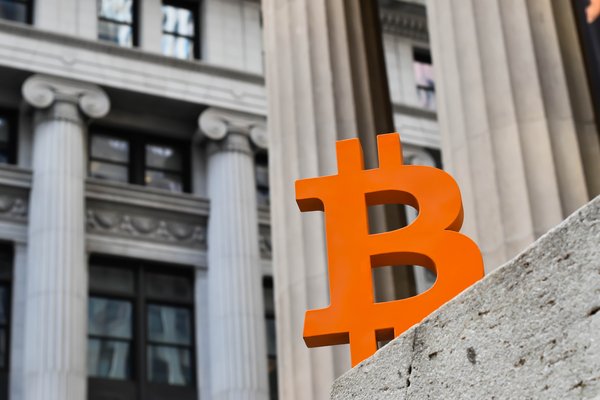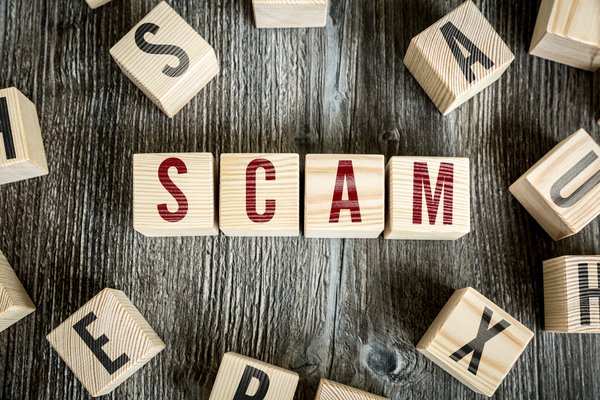Tezos (CRYPTO:XTZ) is the vision of a husband-and-wife team who wanted to build a self-amending blockchain. It's governed by holders of its native cryptocurrency, the XTZ token. Since it's capable of running smart contracts, Tezos is a versatile platform that can be used for many purposes, including developing decentralized apps (dApps) and minting non-fungible tokens (NFTs).
The project quickly gained support and raised hundreds of millions in funding. However, Tezos has also had some bumps in the road, including legal issues and infighting between the creators and the Tezos Foundation. Keep reading for the full story on this blockchain protocol.

What makes Tezos unique?
The governance system is one of the most unique parts of Tezos. It's an open-source blockchain platform capable of self-amendment. The Tezos website describes it as a blockchain designed to evolve.
Stakeholders who own enough XTZ tokens are called bakers and can propose changes to the blockchain. If a change is approved, it can be tested and activated.
With this system, Tezos can upgrade itself without needing to split into separate blockchains. When a blockchain splits, it's known as a hard fork, with one of the most notable examples being Bitcoin (CRYPTO:BTC) and one of its earlier hard forks, Bitcoin Cash (CRYPTO:BCH). Hard forks aren't always bad, but they can disrupt blockchains and divide the community, which is why Tezos avoids them.
Like other blockchains with smart contract capabilities, Tezos has a variety of uses. The Tezos ecosystem houses a number of projects, including:
Where Tezos came from
Arthur and Kathleen Breitman, a married couple who met at a crypto-anarchist lunch, founded Tezos. Arthur Breitman published two papers about the concept in 2014 while working at Morgan Stanley. He came up with the name for Tezos by creating a program that searched for unclaimed websites with names that were pronounceable in English.
In 2016, Arthur Breitman traveled to Switzerland and met Johann Gevers, who was working on a digital currency called Monetas at the time. Gevers set up the Tezos Foundation in Switzerland.
In July 2017, Tezos had a record-setting initial coin offering (ICO) that raised $232 million in Bitcoin and Ethereum (CRYPTO:ETH). Controversy quickly followed as the Breitmans and Gevers argued over spending decisions. Several class action lawsuits related to the ICO were filed alleging misrepresentation and violation of U.S. securities laws by Tezos.
Gevers ended up resigning from the Tezos Foundation in February 2018 and received $400,000. Tezos launched on Sept. 17, 2018. In 2020, the Tezos Foundation reached a settlement where it paid $25 million to settle its U.S. lawsuits.
How Tezos works
Tezos uses a system called baking to validate transactions. It's essentially the proof-of-stake model, although Tezos' version is a variation called liquid proof of stake. Proof of stake is a validation method that doesn't require much energy, so it's more eco-friendly.
Anyone who has at least 8,000 XTZ can become a baker and validate transactions on the Tezos blockchain. When they validate a block of transactions, they receive a staking reward, which consists of XTZ tokens.
People who have fewer than 8,000 XTZ can become delegates. A delegate gives baking rights to a baker, which gives the baker a greater chance of winning blocks and earning rewards. The baker pays shares of the staking rewards to the delegate.
Bakers are also in control of governance on Tezos. Any baker can submit a proposal during the proposal period, up to a maximum of 20 proposals per baker. The most upvoted proposal advances to an exploration vote where 80% of voting bakers must support the proposal for it to progress.
If a proposal passes the exploration vote, then a new test chain is forked out for 48 hours to evaluate the proposed changes. After the test period, bakers vote to decide if the proposal will pass. If so, the testnet chain will become the mainnet chain.
Tezos’ partnerships
Tezos has had success in finding notable partnership agreements. Here are a few highlights from 2021 and 2022:
- Three Swiss financial firms (Crypto Finance, InCore Bank, and Inacta) are working with Tezos to build tokenized assets, a highly-regulated financial product.
- Manchester United signed a multi-year sponsorship agreement with Tezos for more than 20 million pounds. As part of the agreement, Tezos will be featured on the club's training kits.
- Red Bull Racing Honda signed a multi-year partnership for Tezos to build its first NFT fan experience.
- Ubisoft (OTC:UBSFF) has partnered with Tezos to add NFT items to its games.
- Misfits Gaming Group announced a partnership with Tezos, which will be the company's official blockchain.
Can I make passive income with Tezos?
You can make passive income by staking Tezos. When you stake cryptocurrency, you earn a percentage of those staked assets for your role in helping the blockchain. Your XTZ tokens are safe while you do this, and you can unstake them at any time.
There are a few ways to stake Tezos. You can do it yourself and become either a baker or a delegate. Becoming a baker requires more technical knowledge and requires at least 8,000 XTZ, so becoming a delegate is the easier option.
A simpler option is to stake Tezos through a crypto exchange. Here are a few of the best crypto exchanges that support Tezos staking:
Unique risks
Tezos has been an up-and-down blockchain project, going through big wins and some challenging low points. In a crowded market of smart contract blockchains, Tezos has fallen behind the competition.
The fact that the founders of Tezos and the founder of the Tezos Foundation started feuding after their ICO wasn't good for the project's reputation. The lawsuits regarding the Tezos fundraiser were an even bigger scandal. Tezos has resolved those issues, but they're still a black mark that likely took some attention away from development.
Although Tezos is a useful blockchain platform, it's far from the only one with smart contract functionality. It faces stiff competition from Ethereum, which is the largest blockchain for DeFi by a wide margin. There's also Solana (CRYPTO:SOL), Cardano (CRYPTO:ADA), and Avalanche (CRYPTO:AVAX), all of which have carved out greater market share than Tezos.
Is Tezos a good investment?
As previously noted, Tezos is in a very competitive space. There are several noteworthy programmable blockchains out there. The question for investors is which will have long-term success.
Tezos has key advantages that could help it do well. Its self-amending governance system is a great innovation that gives stakeholders control and helps it avoid issues other blockchains have had during upgrades. Investors can also earn more XTZ tokens by staking Tezos.
Tezos promotes its security as a strong suit, claiming it’s a popular choice for security tokens, a type of cryptocurrency that is a digital asset representing an asset with real-world value. Multiple companies operating in this space, including tZero and Elevated Returns, are using the Tezos blockchain. Tezos also touts its formal mathematical verification of smart contracts, multi-signature contracts, ease of network upgrades, and specialized tools and support for security token compliance.
It's impossible to say whether Tezos will make it, but it certainly has potential. If you decide to invest in cryptocurrency, remember that it's a volatile market, so you should only invest what you can afford to lose.
How to buy Tezos
One of the nice things about Tezos is that it's easy to buy. Many crypto apps and exchanges list it. Coinbase, Kraken, Crypto.com, and Gemini are all good choices because they sell Tezos and support Tezos staking, allowing you to earn rewards on what you buy.
If you already have an account with a crypto exchange, check if Tezos is available to purchase. If not, you can get it by registering for an account with any of the aforementioned exchanges.
Tezos focuses on what's important for a blockchain project since it's highly secure and can upgrade itself as necessary. If it's able to increase commercial adoption, it could pay off for investors.





























































































































